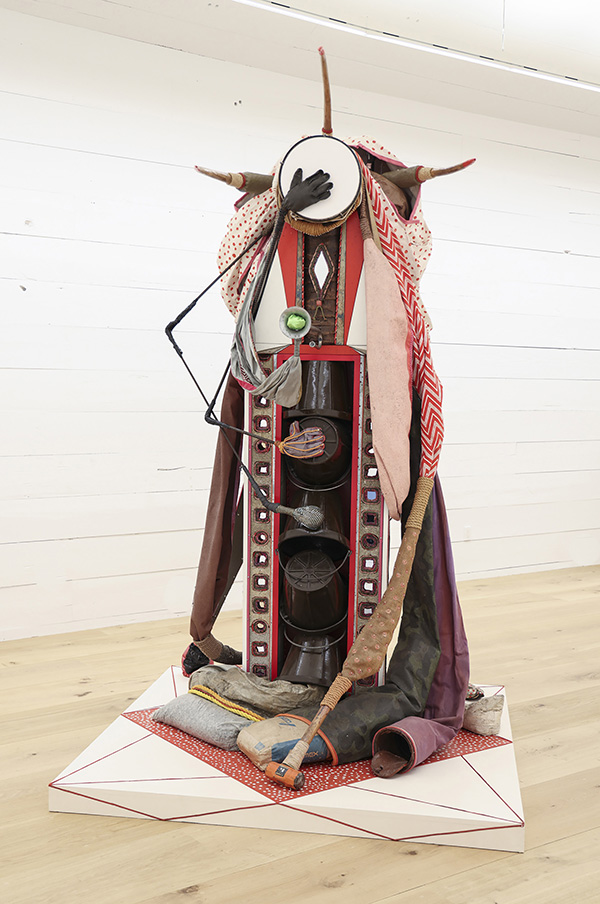Audio Stop 969

mirrors, concrete blocks, cement bag, sledgehammer, construction stones bag, paint bucket, wood panels, palm tree trunk, burlap, leather, ropes, sequin, awning, plastic ropes, fabric, trumpet, pins, duct tape, maracas, sneaker, tambourine, working gloves, boxing gloves, acrylic
National Gallery of Art, Washington, New Century Fund
With thanks to GFR Media, Puerto Rico
Daniel Lind-Ramos
Power Figure, 2016-2020
Read full audio transcript
DANIEL LIND-RAMOS:
My name is Daniel Lind-Ramos. The title of the piece is, Figure of Power or Figura de Poder; this work is an assemblage. And when I make an assemblage, I use objects. Objects that are found, objects that I bought, objects that I create. But of course those materials are attached to an experience that I want to transform in a visual symbol. And that experience is related with my community, is related with my family, with myself, with the Caribbean region and with the African Diaspora, and even with Africa.
NARRATOR:
Among the many elements, you can see references to labor and construction – an important part of life in Puerto Rico, which is often impacted by hurricanes. But at its core, this is a figure of power.
DANIEL LIND-RAMOS:
In the top of the sculpture, you see the horns; right? But also, it’s very important the color key because the color key, it is related with an Orisha, which is a warrior. But it’s very important to mention the focal point, which is a black hand, which is against a tambourine. Because music as a cultural expression is very important too.
If you come to Puerto Rico you could be confused because the way that we protest, right, we use music and we use the (hand clap) pandero. I have seen some tourists that think we are celebrating. No, we are protesting. So (hand clap) the living figure, the power figure (hand clap) is live in you (hand clap). Not only in the carnival but in a protest. That’s very important.
That also help us to develop a very strong sense of belongingness. I was thinking about the power of being together, the power of the sense of belongingness really with our ancestor, past. And of course, I’m talking about, our people that came to this region, as slaves, and the legacy that they left us.